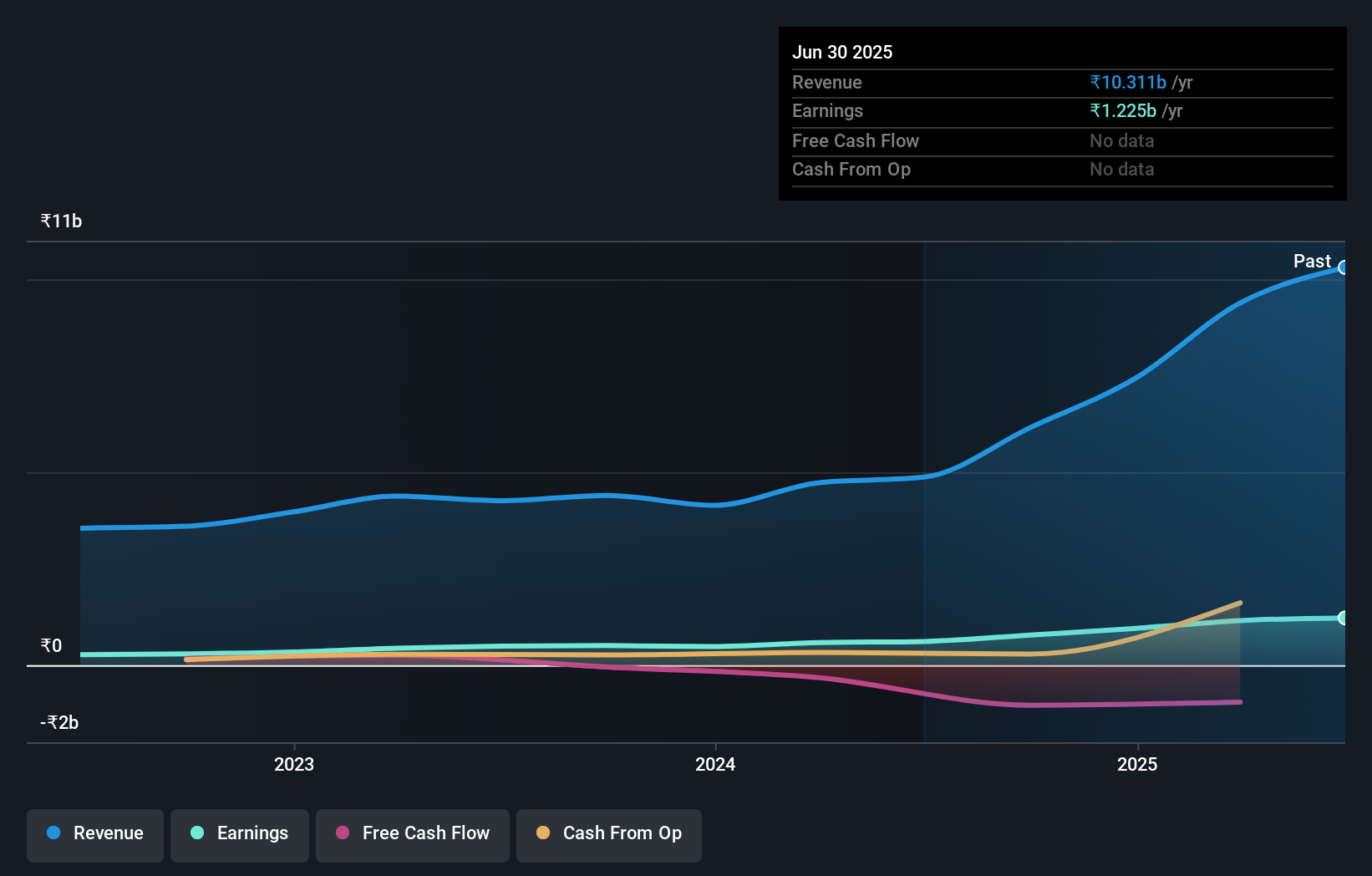- India
- /
- Renewable Energy
- /
- NSEI:KPEL
After the recent decline, K.P. Energy Limited (NSE:KPEL) Senior Key Executive Farukbhai Patel's holdings have lost 12% of their value
Key Insights
- K.P. Energy's significant insider ownership suggests inherent interests in company's expansion
- A total of 4 investors have a majority stake in the company with 50% ownership
- Using data from company's past performance alongside ownership research, one can better assess the future performance of a company
A look at the shareholders of K.P. Energy Limited (NSE:KPEL) can tell us which group is most powerful. We can see that individual insiders own the lion's share in the company with 54% ownership. That is, the group stands to benefit the most if the stock rises (or lose the most if there is a downturn).
And last week, insiders endured the biggest losses as the stock fell by 12%.
In the chart below, we zoom in on the different ownership groups of K.P. Energy.
Check out our latest analysis for K.P. Energy

What Does The Lack Of Institutional Ownership Tell Us About K.P. Energy?
Institutional investors often avoid companies that are too small, too illiquid or too risky for their tastes. But it's unusual to see larger companies without any institutional investors.
There could be various reasons why no institutions own shares in a company. Typically, small, newly listed companies don't attract much attention from fund managers, because it would not be possible for large fund managers to build a meaningful position in the company. Alternatively, there might be something about the company that has kept institutional investors away. Institutional investors may not find the historic growth of the business impressive, or there might be other factors at play. You can see the past revenue performance of K.P. Energy, for yourself, below.

K.P. Energy is not owned by hedge funds. Our data suggests that Farukbhai Patel, who is also the company's Senior Key Executive, holds the most number of shares at 45%. When an insider holds a sizeable amount of a company's stock, investors consider it as a positive sign because it suggests that insiders are willing to have their wealth tied up in the future of the company. Veer Value Ventures LLP is the second largest shareholder owning 2.2% of common stock, and Manish Haria holds about 2.0% of the company stock.
On looking further, we found that 50% of the shares are owned by the top 4 shareholders. In other words, these shareholders have a meaningful say in the decisions of the company.
While it makes sense to study institutional ownership data for a company, it also makes sense to study analyst sentiments to know which way the wind is blowing. As far as we can tell there isn't analyst coverage of the company, so it is probably flying under the radar.
Insider Ownership Of K.P. Energy
While the precise definition of an insider can be subjective, almost everyone considers board members to be insiders. Management ultimately answers to the board. However, it is not uncommon for managers to be executive board members, especially if they are a founder or the CEO.
Insider ownership is positive when it signals leadership are thinking like the true owners of the company. However, high insider ownership can also give immense power to a small group within the company. This can be negative in some circumstances.
Our most recent data indicates that insiders own the majority of K.P. Energy Limited. This means they can collectively make decisions for the company. Given it has a market cap of ₹31b, that means they have ₹16b worth of shares. Most would be pleased to see the board is investing alongside them. You may wish todiscover (for free) if they have been buying or selling.
General Public Ownership
With a 44% ownership, the general public, mostly comprising of individual investors, have some degree of sway over K.P. Energy. While this group can't necessarily call the shots, it can certainly have a real influence on how the company is run.
Next Steps:
It's always worth thinking about the different groups who own shares in a company. But to understand K.P. Energy better, we need to consider many other factors. Take risks for example - K.P. Energy has 2 warning signs (and 1 which is a bit unpleasant) we think you should know about.
If you would prefer check out another company -- one with potentially superior financials -- then do not miss this free list of interesting companies, backed by strong financial data.
NB: Figures in this article are calculated using data from the last twelve months, which refer to the 12-month period ending on the last date of the month the financial statement is dated. This may not be consistent with full year annual report figures.
Valuation is complex, but we're here to simplify it.
Discover if K.P. Energy might be undervalued or overvalued with our detailed analysis, featuring fair value estimates, potential risks, dividends, insider trades, and its financial condition.
Access Free AnalysisHave feedback on this article? Concerned about the content? Get in touch with us directly. Alternatively, email editorial-team (at) simplywallst.com.
This article by Simply Wall St is general in nature. We provide commentary based on historical data and analyst forecasts only using an unbiased methodology and our articles are not intended to be financial advice. It does not constitute a recommendation to buy or sell any stock, and does not take account of your objectives, or your financial situation. We aim to bring you long-term focused analysis driven by fundamental data. Note that our analysis may not factor in the latest price-sensitive company announcements or qualitative material. Simply Wall St has no position in any stocks mentioned.
About NSEI:KPEL
K.P. Energy
Provides balance of plant solutions for wind energy sector in India.
Proven track record with adequate balance sheet.
Similar Companies
Market Insights
Community Narratives




